Kenophobia
Etymologically speaking, the word “honar” (art) in Persian signifies virtuosity and perfection in execution, and the ways of achieving such perfection—the use of all potentialities to create that which cannot be surpassed. From architecture, ceramic tiling, mirror tiling, metalwork, brickwork, and tapestry, all the way to illumination, book design, and calligraphy, passionate coloring, repetitive patterns, rhythmic alternations, and the taste for ornamentation, are among the aesthetic characteristics that bestow upon the Iranian arts and crafts their particular identity. Such artistic behavior on part of the Iranian artists/artisans may be attributed to their own religious beliefs, their employers’ desire to show off their wealth and power, or even to the artists/artisans sense of ascendency and competition with their contemporaries and predecessors. To fill the whole surface of Iranian carpets with floral decorations—a visual allegory of the paradise—was meant to bar Satan from entering them;
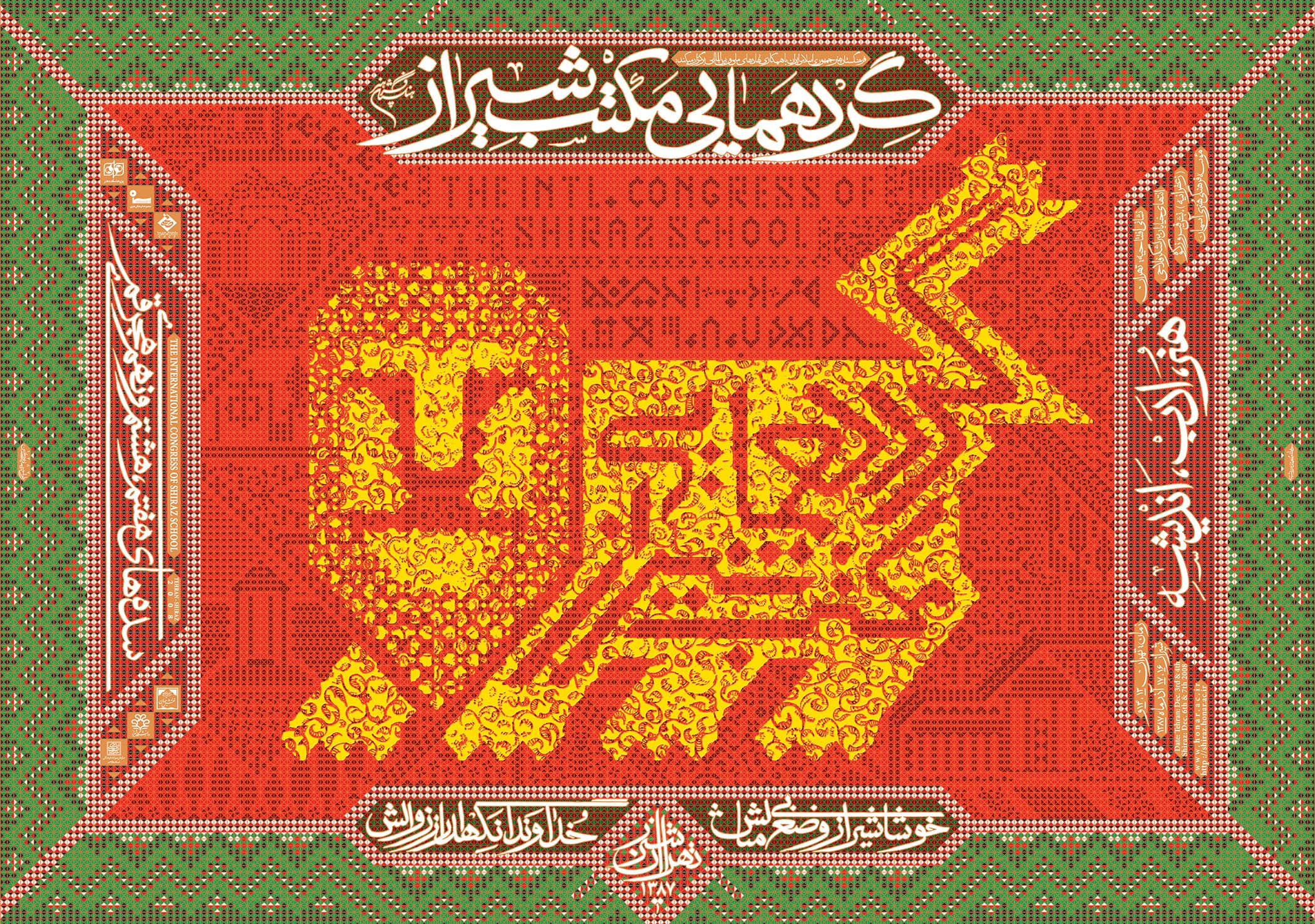
Peyman Pourhosein, Shiraz School Congress, 2008, Poster, Iranian Academy of Arts
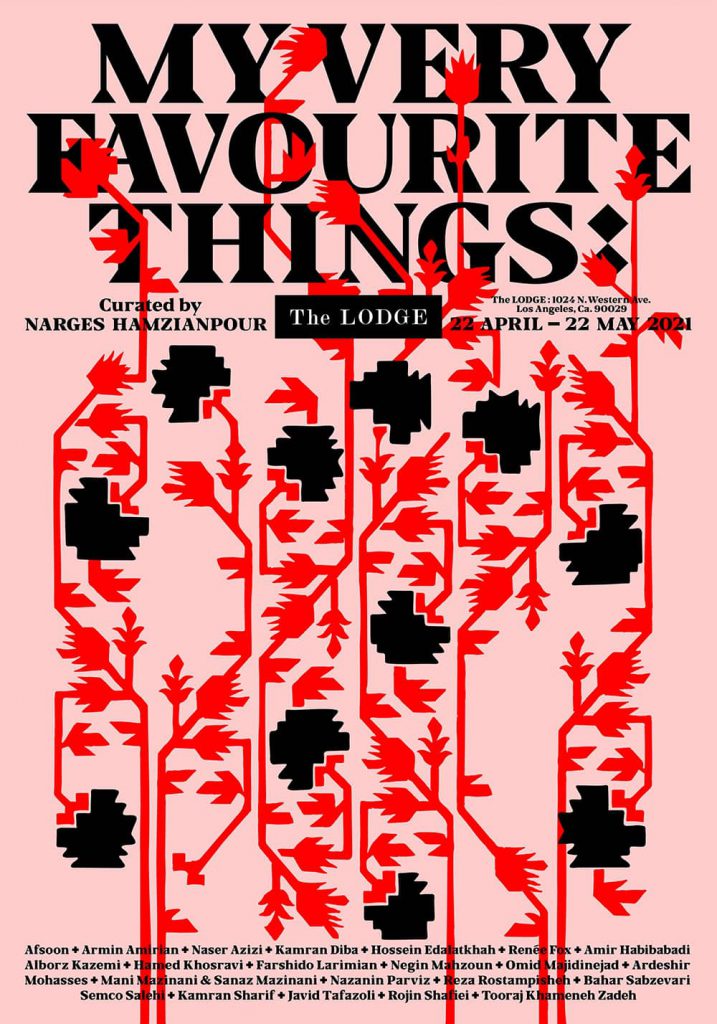
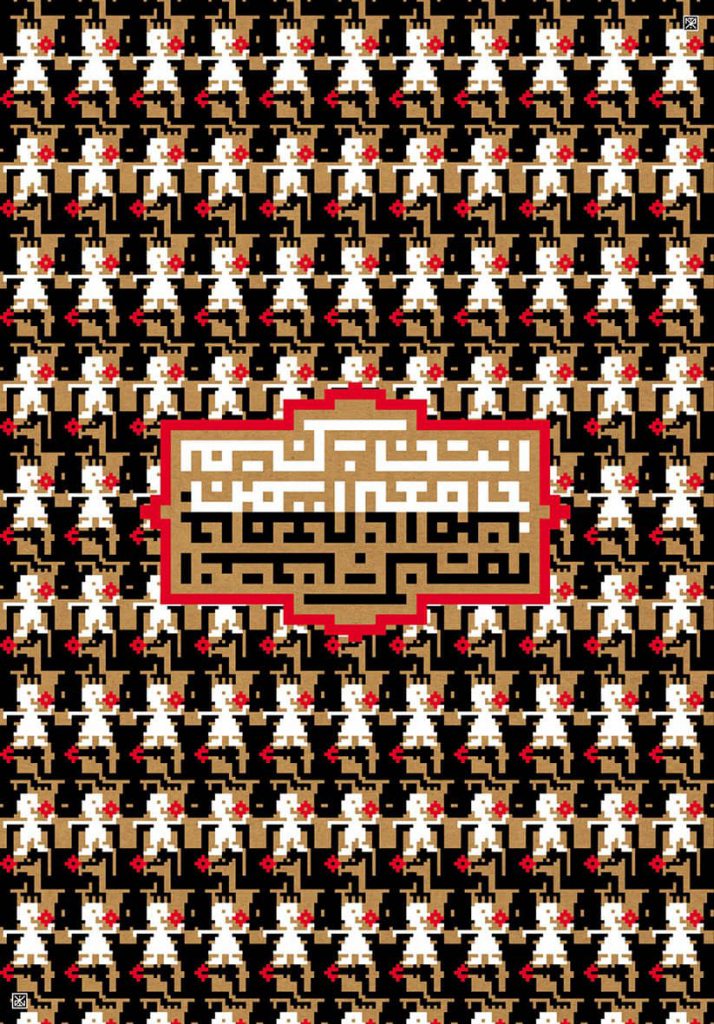
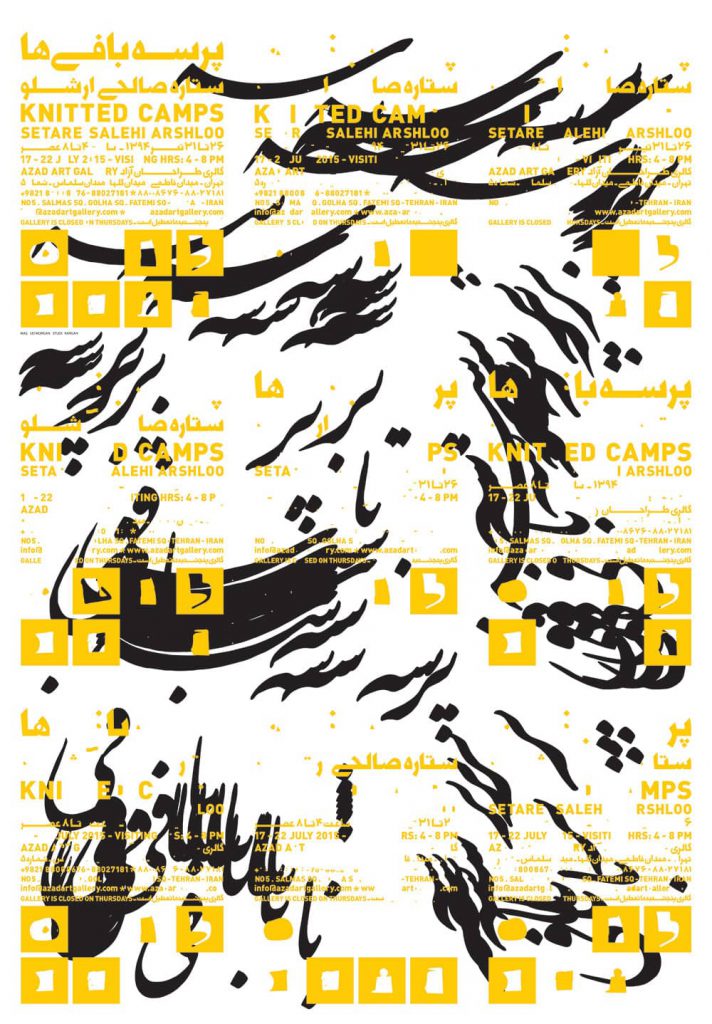
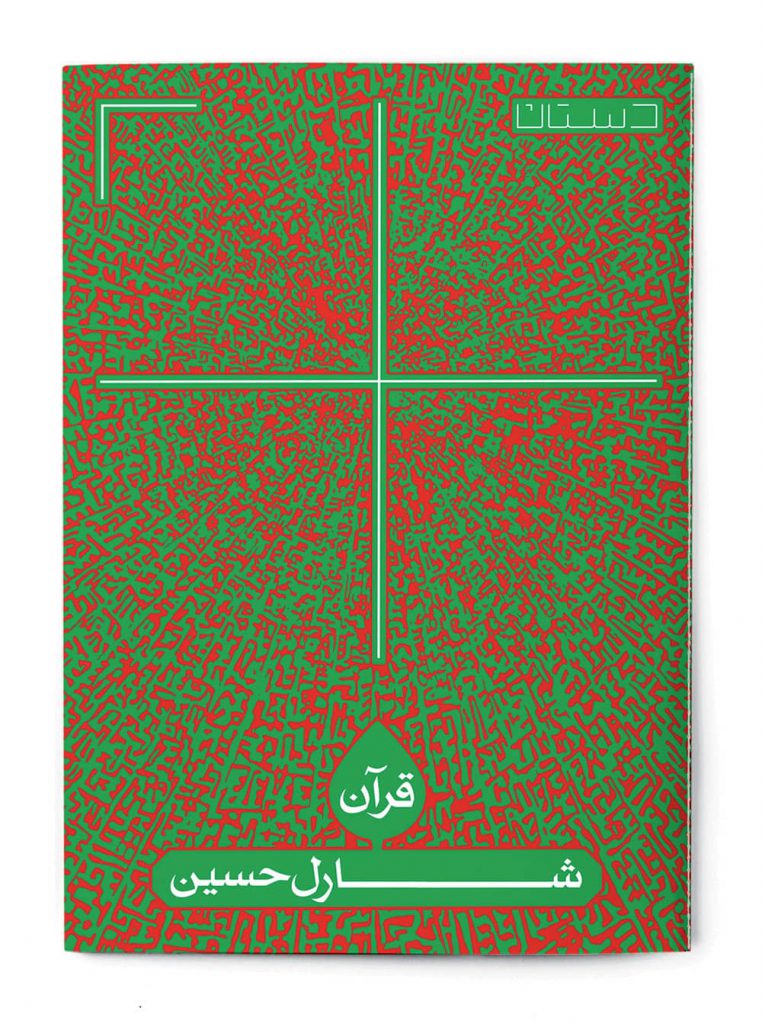
the multiplication of images in a plethora of tiny mirrors in mirror tiling created a dialogue between geometry and optics; the variation in brick patterns was a creative solution to archi- tectural dilemmas; and complicated ornamentations on weapons facilitated their ingress into the rich courts of Iranian kings.
Following a perfectionist style in flaunting every detail, and the desire to inundate the frame with excessive imagery, is a characteristic of the Iranian arts. Relying on the aesthetic principles of their own time, Iranian artists/artisans crafted works and images which increased the spectators’ interpretive liberty by filling each frame with an abundance of visual elements placed on separate graphic levels; and this attitude has historically paved the way of perfection for the Iranian arts and crafts.
Such a maximalist attitude indicates the artist/artisan’s ecstatic desire to inundate the scene with different elements and details, all the while that the same attitude, looked at from a perspective unfamiliar with Iranian culture, may be interpreted as a fear of empty spaces, or even a sort of garrulity. And such were the first encounters of European historians with the Iranian arts who described them in ways that we may call “kenophobic” today, where “kenophobia” designates a sort of anxiety about leaving surfaces or spaces empty.
Following this aesthetic attitude, StudioKargah seeks, not only to take part in Iranian cultural and intellectual heritage, but also to develop this particular taste and aesthetics as an Iranian translation of kenophobia, and to revisit and reinvent it within the scope of our graphic projects, as an elastic visual language with its own roots, textures, and nodes.
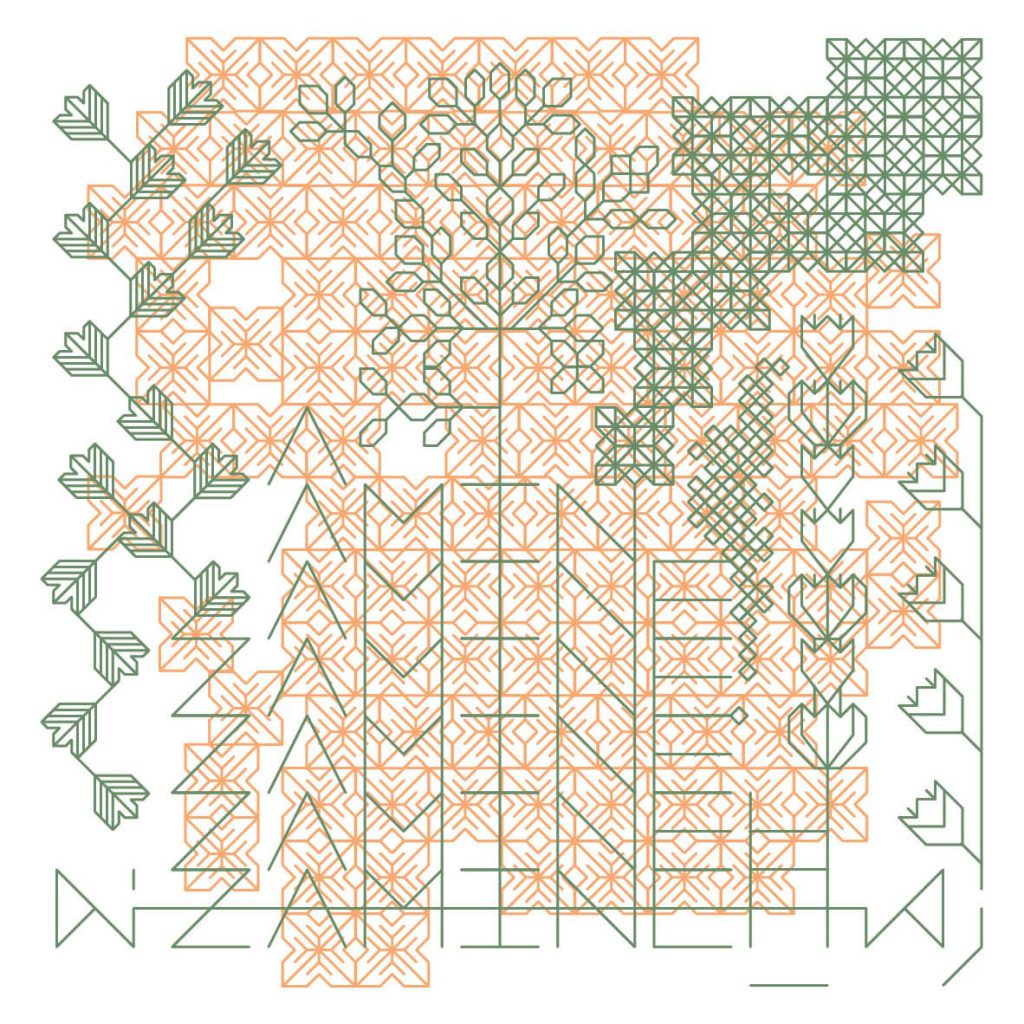
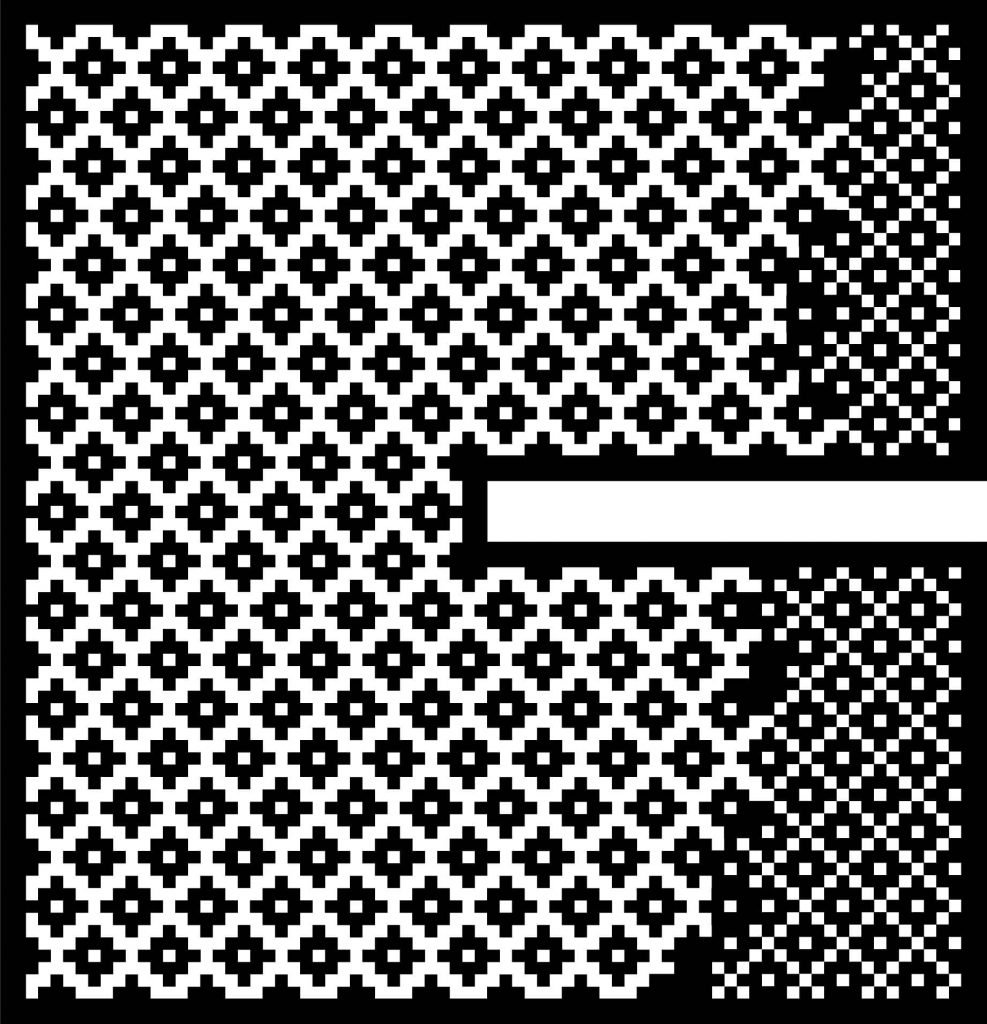
StudioKargah is kenophobic, in the sense that it finds such frames as filled with various visual and textual elements valuable, and feeds on profusion to attain visual ecstasy.
The use of this method is rooted in an essential want of abundance, multiplication, and ornamentation in the arts, and it attempts to put the spectators in a situation where they have more time to discover visual signs when watching a work of graphic design. This, in turn, is a step in admiring the arts within the Iranian cultural geography.
With respect to both form and content, “Kenophobia” is now the basis of StudioKargah installation at “Chaumont 2021.”
Text by Maryam Razi